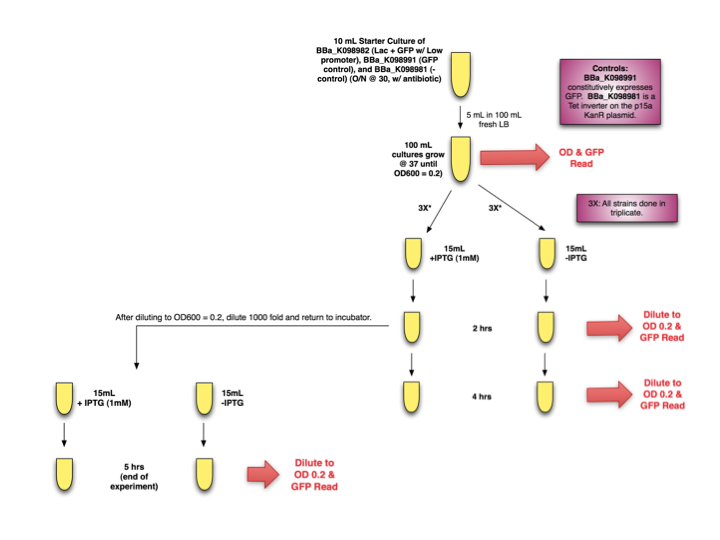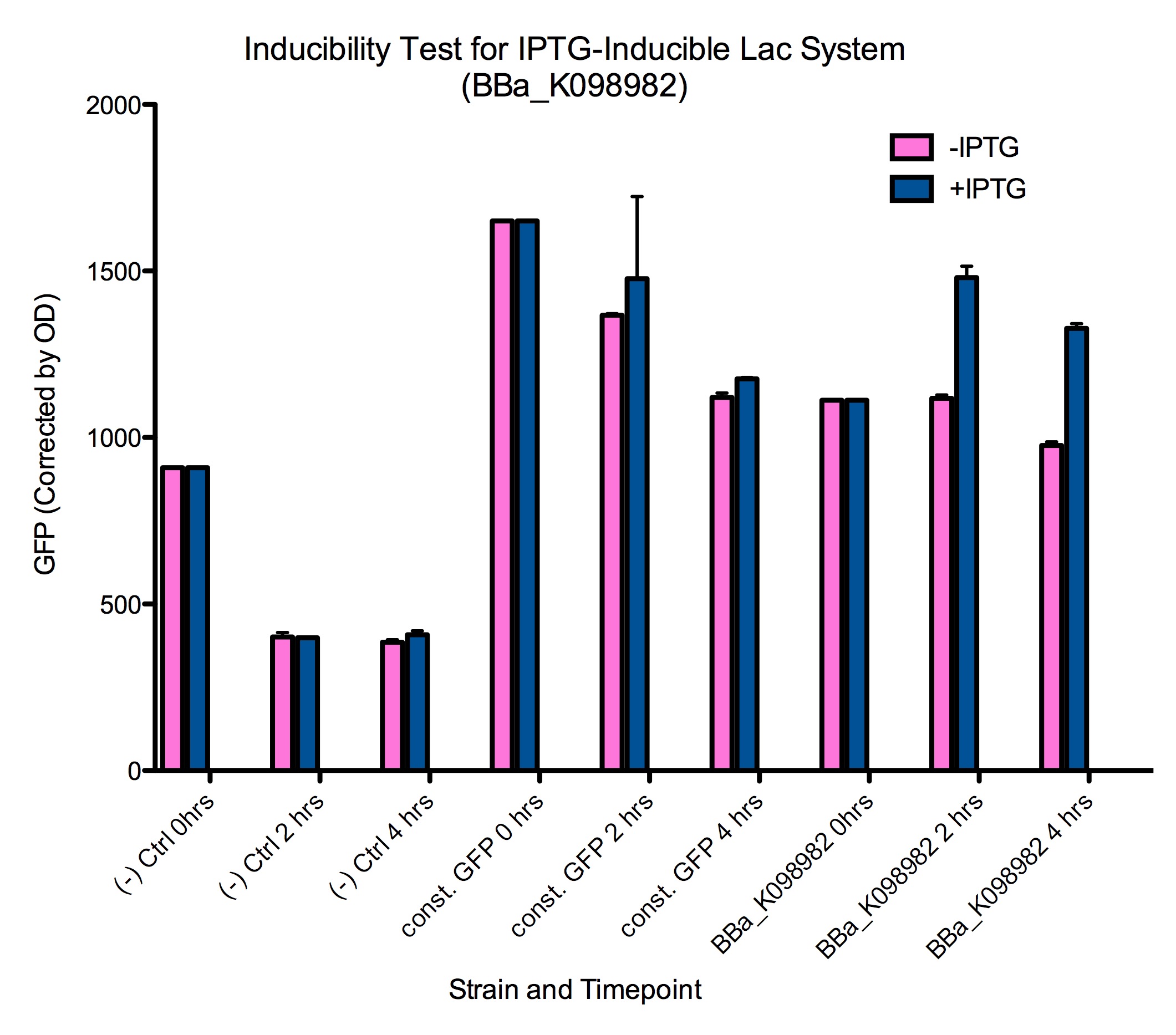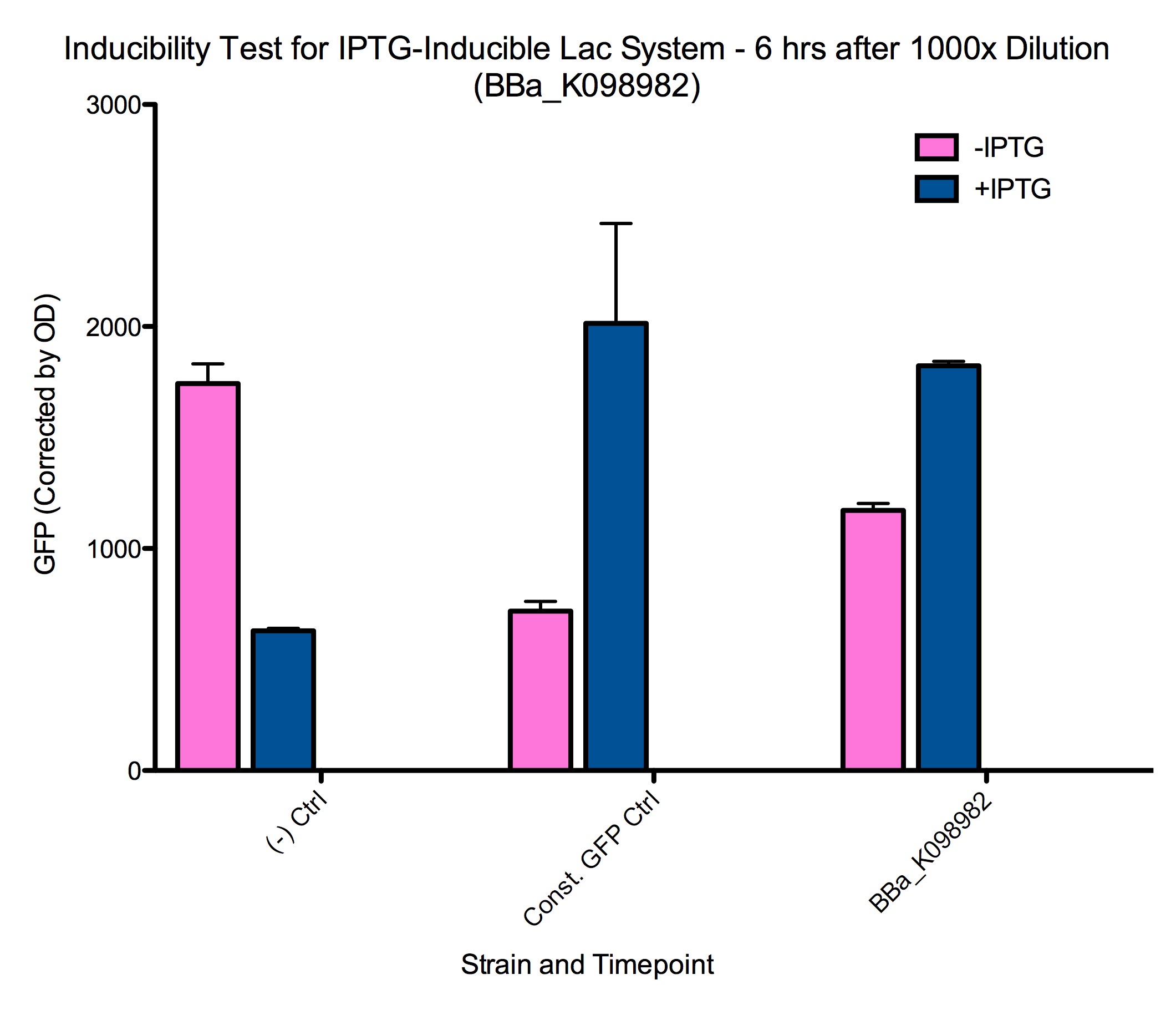Parts Submitted to Registry
Short intro
See [http://partsregistry.org/cgi/partsdb/pgroup.cgi?pgroup=iGEM2008&group=Harvard list] of all parts we submitted.
\\******change subsection headers*******\\
General overview of QPIs
General overview of mtrB
Many genes are involved in Shewanella’s complex respiratory system (Heidelberg et al. 2002). We focused on mtrB, a 679-amino-acid-long outer membrane protein thought to be involved in the binding of metals and the localization of outer membrane cytochromes during reduction (Bretschger et al. 2007). It is unfortunately toxic in E. coli (Saffarini). Bretschger et al. recently characterized the role of mtrB in anaerobic respiration of Shewanella by looking at the effects of knock-out and complementation of mtrB on the electrical output of Shewanella. It was found that the strain which lacked mtrB produced less than 20% of the current generated by the wild type strain. In complemented strains, where mtrB is expressed constitutively under the control of the lacZ promoter in the knock-out strain, the phenotype was rescued with a similar amount of current being produced to that of the wild type (Bretschger et al. 2007). Not only does this experiment demonstrate the importance of mtrB in reduction in Shewanella, it also suggests a mechanism by which this electrical output could be controlled. Transforming plasmids containing mtrB under the control of an inducible promoter into mtrB knock out Shewanella, would conceivably create a strain of Shewanella which could increase its electrical output in response to the turning-on of the promoter controlling mtrB expression. The creation of a strain with an inducible electrical output could have important applications in biotechnology by creating a system which couples the ability of Shewanella to respond to a diverse array of stimuli with the speed and ubiquity of electricity.
lac system (will be moved to separate page)
description of complete system
Amy's induction data
use sublevels, as entire section will become new page
 BBa_K098984 with BioBrick Prefix and Suffix Inducibility Test for Lac System with GFP Reporter and Weak Promoter
An induction test was designed to test the inducibility of the lac system by IPTG when the repressor (LacI) is driven by a weak promoter.
Experimental Design
 Lac Induction Experimental Design
Starter cultures of E. coli with [http://partsregistry.org/wiki/index.php?title=Part:BBa_K098982 BBa_K098982] were grown overnight. They were then diluted and grown to OD 0.2 before separation into induced (+IPTG, 1mM) and uninduced cultures (-IPTG). OD and GFP readings were taken at time 0, 2, and 4 hours. Additionally, after diluting T=2hrs samples to OD 0.2 for accurate GFP measurements, samples were further diluted 1000x, induced (or not induced) again, and placed back in the incubator until the end of the experiment, when OD and GFP readings were taken.
Results
Induction of GFP expression was observed at both 2 and 4 hours after adding IPTG. Levels of GFP expression in uninduced samples, however, remained relatively the same throughout the 4 hours. Meanwhile, IPTG induction was not observed in either the negative control ([http://partsregistry.org/wiki/index.php?title=Part:BBa_K098981 BBa_K098981]) or the constitutive GFP control ([http://partsregistry.org/wiki/index.php?title=Part:BBa_K098991 BBa_K098991]).

The 1000x dilutions of samples at 2 hours after induction produced similar results after 5-6 hours. These cells are presumably at a different growth phase from cells that have been growing at much higher concentration for longer, and are thus induced in different conditions.

QPIs that we did not use with mtrB
tet
Thermoinducible cI System
This system uses a a temperature sensitive variant of cI lambda to regulate the lambda promoter.
The thermoinducible cI lambda system uses cI857 (a mutant form of cI from [http://www.addgene.org/pgvec1?f=c&vectorid=5079&cmd=genvecmap&dim=800&format=html&mtime=1188314819| pGW7] purchased from [http://www.atcc.org/ATCCAdvancedCatalogSearch/ProductDetails/tabid/452/Default.aspx#40554| ATCC]) to regulate expression of genes under the control of the lambda promoter. The cI857 repressor is repressed by thermal denaturation. Activity of cI857 begins to decrease around 30 ºC and is fully denatured by around 42 ºC (Leipold et al., 1994). Thus transcription of the gene under the control of the lambda promoter can be induced by increasing the temperature from 30 ºC to 37 ºC-40 ºC.
Edit stuff here; we'll move entire section to new page.
|